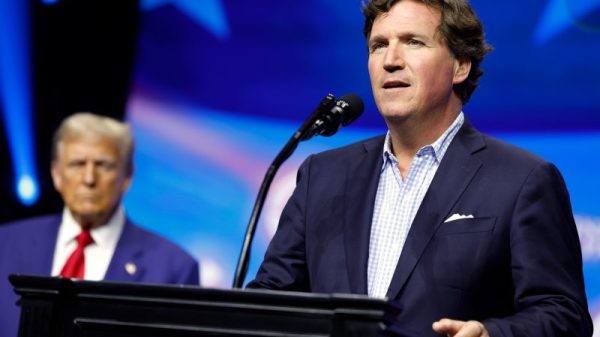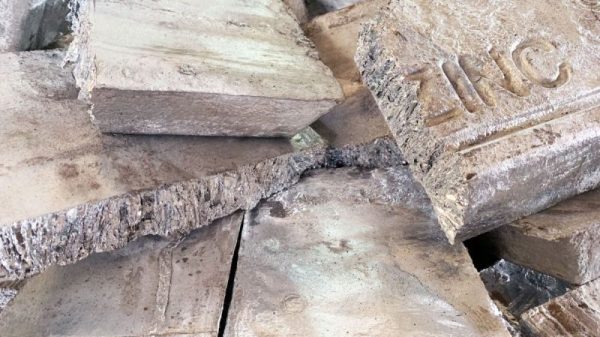Hassan Nasrallah, whom Israel believes it killed in a strike on southern Beirut, turned Hezbollah into one of the most powerful paramilitary forces in the Middle East. His death caps a series of devastating blows for the group, already reeling from the humiliation of having its communications network comprehensively infiltrated, and suggests that one of Israel’s most formidable enemies is deeply wounded.
One of the founding members of the group formed four decades ago with the aid of Iran, Nasrallah ascended to the top of Hezbollah in 1992. He replaced his predecessor and mentor, Abbas Musawi, as secretary-general of Hezbollah, after he was killed by an Israeli helicopter strike.
Born to a grocer and his wife in Beirut in August 1960, Nasrallah spent his early adolescence under the shadow of Lebanon’s civil war.
His family were forced to flee the capital when the fighting erupted in 1975, moving further south to a village near the coastal city of Tyre.
One year later, Nasrallah moved to Iraq to attend a Shiite seminary. But he was swiftly expelled during the persecution of Shiite Muslims under Iraqi President Saddam Hussein’s repressive regime – returning to Lebanon to study under his teacher, Musawi.
When Israel invaded Lebanon in 1982, Nasrallah rallied a group of fighters to resist the occupation – which would evolve into Hezbollah.
Israeli forces took almost half of Lebanon’s territory that year, and were held responsible for the killing of at least 17,000 people, according to reports and an Israeli inquiry into a massacre at a Beirut refugee camp.
Transformation of Hezbollah
Known for his fiery speeches, the leader oversaw the transformation of Hezbollah, from a rag-tag group of militants in the 1980s to an organization that mounted a concerted campaign to drive out Israeli occupation in 2000.
The Lebanese militant group became a regional fighting force under Nasrallah. He led the growth of Hezbollah’s forces – his fighters and reservists are thought to number 100,000 – as well as the proliferation of its arsenal, which boasts long-range as well as medium and short-range missiles and drones.
Nasrallah commands a dedicated following of hundreds of thousands of largely Shiite Muslims – in Lebanon, Iraq, Syria and Yemen. His influence in the Iran-backed so-called axis of resistance grew exponentially after the US assassinated Iran’s top general Qassem Soleimani, the architect of the region-wide axis, in 2020.
Hezbollah is the most robustly armed non-state group in the region – and is the most dominant political force in crisis-ridden Lebanon. Much of the Western world has designated Hezbollah a terrorist organization.
‘Lebanon will not stop supporting Gaza’
The Lebanese militant group has increasingly traded strikes with Israel since it launched its assault on Gaza after the Hamas-led October 7 attacks – inflaming tensions in the region.
Hezbollah says it has been firing on Israel in solidarity with Hamas, and Palestinians trying to survive Israeli attacks in Gaza, which have killed more than 41,000 people, according to the Ministry of Health there.
Days before he was killed, Nasrallah vowed to continue striking Israeli positions until Israel’s offensive in Gaza ends. “I say clearly: no matter the sacrifices, consequences, or future possibilities, the resistance in Lebanon will not stop supporting Gaza,” he said in a speech on September 19.
Fears of an all-out war peaked earlier this month, after Israel unleashed a wave of lethal explosions across Lebanon targeting Hezbollah fighters. Many of those killed were civilian bystanders.
In the days since, hundreds of thousands of people in Lebanon have been forced from their homes by Israeli attacks. In total, since October 7, more than 1,500 civilians in Lebanon have been killed and over 200,000 people displaced, according to the UN’s Office for the Coordination of Humanitarian Affairs. Lebanese officials estimate the true number of displaced is closer to half a million.
Human rights advocates have fiercely condemned the violence – including UN Secretary-General António Guterres, who warned that Lebanon is suffering its bloodiest period “in a generation” and called on Israel and Hezbollah to “stop the killing and destruction.”



























